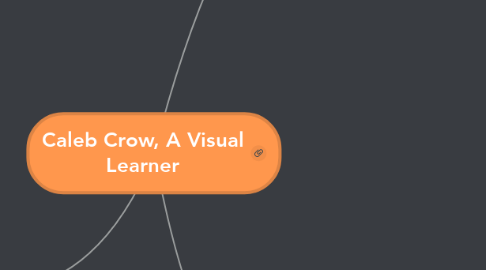Caleb Crow, A Visual Learner
by Caleb Crow

1. I have known since a young age that I am a visual learner. Everything that I am proficient in is a hands on kind of task. My job is that of a mechanic and gunner, these both need visual reference in order to successfully master the skill. Simply reading instruction will not give you the guidance needed to be able to shoot or turn a wrench, you have to actually get out there and do it.
2. My results from the Learning Style Inventory http://www.personal.psu.edu/bxb11/LSI/LSI.htm are as follows:
2.1. Results for: Caleb M Crow ACT X REF 11 9 7 5 3 1 1 3 5 7 9 11 <-- --> SEN X INT 11 9 7 5 3 1 1 3 5 7 9 11 <-- --> VIS X VRB 11 9 7 5 3 1 1 3 5 7 9 11 <-- --> SEQ X GLO 11 9 7 5 3 1 1 3 5 7 9 11 <-- -->
3. What exactly is a Visual learner?
3.1. If your are a VISUAL learner, then by all means be sure that you look at all study materials. Use charts, maps, filmstrips, notes and flashcards. Practice visualizing or picturing words/concepts in your head. Write out everything for frequent and quick visual review.
4. Some of the ways that I believe i can use the online learning environment to aid me in my visual learning style is:
4.1. To use streaming services such as YouTube to find videos and audio on research subjects. To use visual references such as online data sites that include graphs and charts for data. Also, doing things like eating "Brainfood" and working out daily will aid me in achieving my college goals, like suggested in week 3 reading.
4.2. Ways I can succeed academically as a visual learner include: Make visual representations by drawing pictures, charts, maps, graphs, etc.; Use color to highlight important points; Take notes while you read; Illustrate your ideas as a picture or brainstorming bubble; Use multi-media (e.g. computers, videos, and filmstrips); Study in a quiet place away from verbal disturbances; Visualize (in your head) information as a picture to aid memorization; Analyze words by tearing them apart and putting them back together; Use outlines of reading assignments which cover key points to guide your reading; Use notes and flash cards for review of material, vocabulary, and terminology for a specific course; Use a dictionary. All the visual cues are present: syllabication, definitions, configurations, affixes, etc.; and Retype notes - use different fonts, bold print, and underline important concepts and facts.


